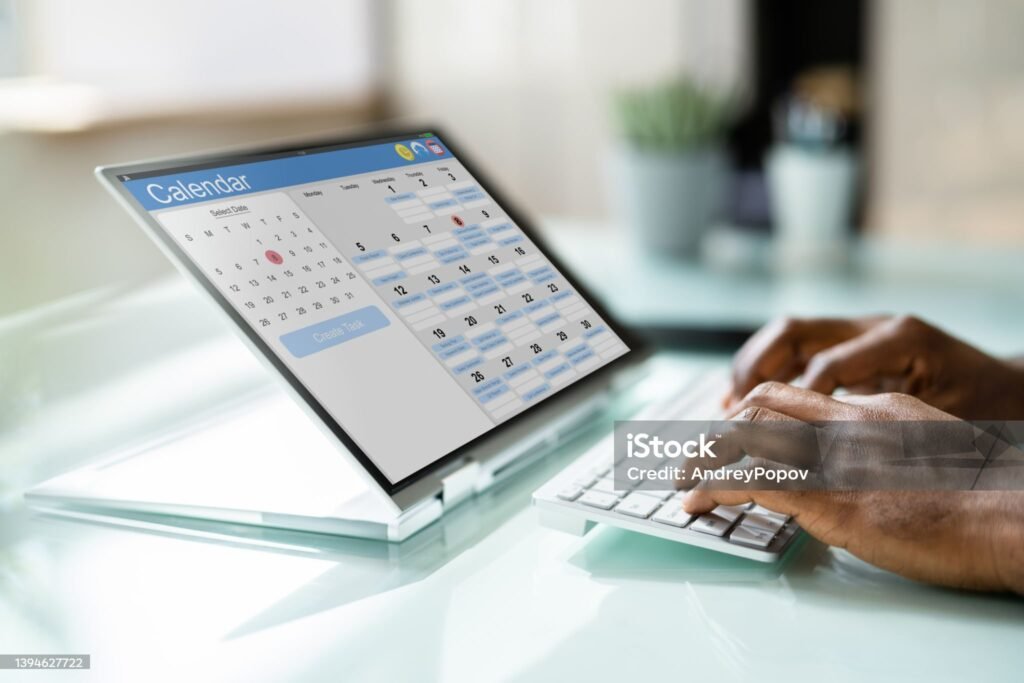In the dynamic world of digital marketing, picking the right email marketing tool is a crucial decision that can make or break your strategy. As we usher in 2024, two tools are vying for attention: Benchmark Email and Sender. Both are robust, but which one is the best fit for your needs? Let’s dive into a detailed comparison, starting with one of the most critical aspects: user interface and ease of use.
| Benchmark Email | Sender |
|---|---|
 |  |
| G2 Score – 4.3 out of 5 stars | G2 Score – 4.4 out of 5 stars |
| TrustRadius Score – 6.5 out of 10 | TrustRadius Score – 5.2 out of 10 |
User Interface and Ease of Use: A Critical Starting Point
In the realm of email marketing, the ease with which you can navigate and use your chosen platform is pivotal. It determines not just the efficiency of your campaigns but also the level of creativity and personalization you can inject into them.
Benchmark Email: Simplicity Meets Elegance
When it comes to user interface, Benchmark Email stands out for its simplicity and intuitive design. Right from the get-go, you’re greeted with a dashboard that’s both welcoming and easy to navigate. The clean layout ensures that you’re not overwhelmed with options, making it particularly friendly for those new to email marketing.
The platform excels in its drag-and-drop email builder, a feature that lets you create professional-looking emails without needing a background in graphic design. This tool is not just about ease; it’s also about empowering you to be creative. You can choose from a wide range of templates, each adaptable to fit your brand’s style.
Moreover, Benchmark Email simplifies the process of organizing your contacts. With a few clicks, you can segment your lists, making it easier to target different sections of your audience with tailored messages. This ease of use extends to its automation features, where setting up triggers and responses is straightforward, allowing for efficient and effective campaign management.
Sender: The Power of Intuitive Design
Sender, on the other hand, brings its own flair to user interface and ease of use. It’s designed with the user in mind, offering a clean and uncluttered interface that makes navigating through various features a breeze. This clarity is especially beneficial for small businesses or individuals who can’t afford to spend too much time on a learning curve.
The email editor in Sender is a delight. Like Benchmark Email, it offers a drag-and-drop interface, but with added elements of customization that can appeal to the more detail-oriented marketer. The platform provides an array of templates, but where it shines is in how you can tweak these templates to align perfectly with your branding needs.
List management in Sender is also a hassle-free affair. The platform offers intuitive tools for segmenting and managing your subscribers, ensuring that your campaigns reach the right audience at the right time. This simplicity in list management is a significant time-saver and reduces the complexity often associated with email marketing.
The Verdict on User Interface and Ease of Use
Both Benchmark Email and Sender offer a user-friendly experience, but they cater to slightly different preferences. Benchmark Email is ideal for those who value simplicity and quick campaign setup. Its straightforward interface and easy navigation make it a great choice for beginners or those who want to create beautiful emails without much fuss.
Sender, while also user-friendly, provides a bit more depth in customization, making it suitable for users who want to spend a little more time crafting their emails and segments for a more tailored approach.
Deliverability: The Heartbeat of Email Marketing Success
One of the most crucial aspects of any email marketing tool is its ability to deliver emails right into the inbox of recipients. Let’s dive into how Benchmark Email and Sender fare in this critical area.
Benchmark Email: Ensuring Your Message Gets Through
Benchmark Email has built a strong reputation for its deliverability. They understand that even the most well-crafted email is of no use if it doesn’t reach the intended inbox. To this end, Benchmark Email has implemented several best practices to enhance deliverability.
Firstly, they maintain a strict policy against spam, which helps in keeping their sender reputation intact. This means that emails sent through Benchmark are less likely to be marked as spam by recipient email servers. Additionally, Benchmark offers a dedicated IP plan, which can be a game-changer for businesses sending emails in high volumes. This dedicated IP helps in building your own sender reputation, further improving deliverability rates.
Moreover, Benchmark Email provides tools to optimize your email content to avoid spam filters. From subject line testing to email body analysis, these tools guide you in creating emails that are not just engaging but also highly deliverable.
Sender: Maximizing Reach with Advanced Technologies
Sender takes deliverability seriously and has implemented advanced technologies to ensure high inbox placement rates. They focus on various aspects of email sending, from infrastructure to content, to maximize deliverability.
One of the key strengths of Sender is their robust infrastructure, which is optimized for email delivery. They constantly monitor their servers and IPs to ensure they are not blacklisted, which is crucial for maintaining high deliverability rates.
In addition to infrastructure, Sender provides insightful recommendations on email content. They offer real-time feedback on factors like subject lines, email length, and image usage, which can impact how email providers view your emails. This proactive approach helps in fine-tuning your emails for better inbox placement.
The Verdict on Deliverability
Both Benchmark Email and Sender offer strong deliverability capabilities, but they approach it differently. Benchmark Email’s focus on maintaining a clean reputation and offering a dedicated IP makes it a reliable choice, especially for businesses with large mailing lists.
Sender, with its advanced technological approach and real-time content optimization, is ideal for those who are looking for an edge in ensuring their emails not only reach the inbox but also engage the recipient.
Automation and Personalization: Crafting Tailored Email Campaigns
In today’s email marketing landscape, the ability to automate and personalize campaigns is not just a luxury; it’s a necessity for engaging with your audience effectively. Let’s compare the automation and personalization capabilities of Benchmark Email and Sender.
Benchmark Email: Simplifying Automation
Benchmark Email makes it easy for users to set up automated email campaigns. Their automation features are designed to be user-friendly, allowing even those new to email marketing to create effective automated sequences.
The platform offers a variety of automation options, including welcome emails, follow-up sequences, and triggered emails based on subscriber actions like website visits or purchases. What makes Benchmark Email stand out in this aspect is the simplicity with which these automations can be set up. The user interface guides you through the process, making it straightforward to create complex email sequences.
In terms of personalization, Benchmark Email provides the basic tools needed to make your emails feel more personal. You can easily insert subscriber names, personalize subject lines, and segment your lists to target specific groups of your audience. While the personalization options are not the most advanced, they are more than sufficient for most email marketing needs.
Sender: Advanced Automation for Engaging Campaigns
Sender takes automation and personalization to a higher level. Their platform offers a wide range of automation options, giving you the flexibility to create highly customized email sequences. From simple autoresponders to complex behavioral triggers, Sender provides the tools necessary for creating dynamic and engaging campaigns.
What sets Sender apart is the depth of their personalization capabilities. Beyond just inserting names or basic segmentation, Sender allows for more granular personalization based on subscriber behavior and preferences. This means you can craft emails that are highly relevant to each segment of your audience, increasing engagement and conversion rates.
Additionally, Sender’s automation workflow is visually intuitive, making it easy to set up and manage even the most complex sequences. This visual approach helps in understanding and optimizing the flow of your email campaigns, ensuring maximum impact.
The Verdict on Automation and Personalization
For those who value simplicity and ease of use in setting up automated campaigns, Benchmark Email is a great choice. Its straightforward automation features are perfect for getting your campaigns up and running with minimal fuss.
On the other hand, if your strategy involves more complex automation and deeper personalization, Sender’s advanced capabilities will serve you better. Their robust tools allow for crafting highly targeted and engaging email sequences that resonate with your audience.

Related: Check out our free SEO suite

Integration Capabilities: Connecting Your Marketing Ecosystem
In our interconnected digital marketing world, the ability of an email marketing tool to integrate seamlessly with other software can greatly enhance its utility. Let’s compare how Benchmark Email and Sender stack up in terms of integration capabilities.
Benchmark Email: Wide Range of Integrations for Enhanced Functionality
Benchmark Email offers a wide array of integrations with various third-party applications and services, which is a significant advantage for businesses looking to streamline their marketing efforts. Their integrations include popular CRM systems, eCommerce platforms, and social media tools, making it easier to synchronize and automate your marketing across multiple channels.
For instance, integrating Benchmark Email with a CRM like Salesforce can enable you to automatically import contacts and segment them based on interactions with your business. Similarly, integration with eCommerce platforms like Shopify allows for personalized email campaigns based on purchase history and customer behavior.
Benchmark Email also supports integration with social media platforms, enabling you to expand the reach of your email campaigns and track engagement across different channels.
Sender: Flexible Integrations for a Customized Marketing Stack
Sender also provides a robust set of integration options, albeit with a slightly different focus. Their platform is designed to be flexible and adaptable, catering to businesses with specific integration needs. Along with mainstream integrations, Sender offers the ability to connect with more niche or specialized software, which can be a boon for businesses operating in specific industries.
The strength of Sender’s integrations lies in their API, which is well-documented and developer-friendly. This means that businesses have the flexibility to create custom integrations that fit their unique workflow and requirements. For companies with in-house technical expertise, this level of customization can be a game-changer, allowing for a highly tailored email marketing setup.
The Verdict on Integration Capabilities
Both Benchmark Email and Sender offer strong integration capabilities, but they cater to different needs. If you are looking for a tool that integrates easily with a wide range of commonly used applications and services, Benchmark Email is an excellent choice. Its broad range of integrations is ideal for businesses looking to connect their email marketing efforts with other aspects of their digital marketing strategy seamlessly.
On the other hand, if you require more specialized integrations or have the capability to leverage a powerful API for custom integrations, Sender’s flexible and adaptable platform will be more suitable. It’s particularly beneficial for businesses with unique integration requirements or those looking to build a highly customized marketing tech stack.
Analytics and Reporting: Turning Data into Actionable Insights
Analytics and reporting capabilities are the eyes and ears of your email marketing strategy, providing critical insights into campaign performance. Let’s examine how Benchmark Email and Sender equip you with the data you need to make informed decisions.
Benchmark Email: User-Friendly Reporting for Quick Insights
Benchmark Email offers a comprehensive analytics suite that’s designed to be accessible to marketers of all skill levels. Their reporting tools provide a clear overview of key performance indicators such as open rates, click-through rates, and bounce rates, all presented in an easy-to-understand format.
What makes Benchmark Email stand out in analytics is the user-friendly approach to data visualization. Their reports include easy-to-read graphs and charts, making it simple to grasp your campaign’s performance at a glance. This is particularly beneficial for smaller teams or individuals who need to make quick, informed decisions without delving too deep into the data.
Benchmark Email also includes features like A/B testing, allowing you to compare different versions of your emails to see what resonates best with your audience. This helps in refining your strategy and enhancing the effectiveness of your campaigns.
Sender: Detailed Reporting for Data-Driven Marketers
Sender takes a more detailed approach to analytics and reporting. Their platform offers in-depth insights that cater to the needs of data-driven marketers. You get a comprehensive view of your campaign performance, with detailed metrics that go beyond the basics.
One of the key advantages of Sender is the ability to track individual recipient behavior. This level of detail allows for granular analysis of how subscribers interact with your emails. You can see not just overall campaign performance, but also how specific elements within your emails perform, such as links or calls to action.
Sender also provides advanced deliverability reporting, giving you insights into factors that affect your emails’ ability to reach the inbox. This includes information on sender reputation, spam complaints, and more, helping you to continuously optimize for better deliverability.
The Verdict on Analytics and Reporting
If you prefer an analytics tool that is straightforward and easy to interpret, Benchmark Email is a great choice. Its user-friendly reporting and visualization tools make it easy to understand your campaign performance and make quick adjustments.
For those who require a deeper dive into data and want detailed insights to inform their email strategy, Sender’s advanced analytics and reporting capabilities will be more appealing. The depth of data provided by Sender is ideal for marketers who want to closely monitor and optimize every aspect of their email campaigns.
Pricing and Affordability: Balancing Cost with Functionality
In the search for the best email marketing tool, pricing plays a crucial role. It’s not just about choosing the most affordable option; it’s about finding the best value for your investment. Let’s compare the pricing structures of Benchmark Email and Sender to see which offers the best balance of cost and functionality.
| Benchmark Email | Free Plan: Offers basic email marketing features with a subscriber limit and Benchmark branding. Pro Plan: Pricing starts at $13/month for 500 subscribers and includes advanced features like automation, A/B testing, and targeted emailing. The price increases based on the number of subscribers. |
| Sender | Free Plan: Up to 2,500 subscribers and 15,000 emails per month. Includes basic features like newsletters and subscription forms. Standard Plan: Starting at $11/month for up to 5,000 subscribers and 60,000 emails. Includes advanced features like autoresponders and transactional emails. Professional Plan: Custom pricing based on higher volumes of subscribers and emails, including additional features like dedicated IP and webhooks. |
Benchmark Email: Flexible Pricing for Businesses of All Sizes
Benchmark Email offers a variety of pricing plans to cater to different needs and budgets. They have a free plan, which is a great starting point for small businesses or beginners in email marketing. This plan includes access to basic features but comes with limitations on the number of subscribers and emails you can send.
As your needs grow, Benchmark offers tiered pricing based on the number of subscribers. Their paid plans include all features, such as advanced automation, premium support, and detailed analytics. This clear, subscriber-based pricing structure makes it easy for businesses to scale their email marketing efforts in line with their growth.
Additionally, Benchmark Email’s pricing is transparent, with no hidden fees. This straightforward approach is appreciated by businesses that need to budget carefully and avoid unexpected costs.
Sender: Cost-Effective Solutions for Targeted Needs
Sender’s pricing model is designed to be both flexible and cost-effective. They offer a free plan, which is quite generous in terms of the features and the number of emails you can send. This makes Sender an attractive option for startups or small businesses with limited budgets.
For more extensive needs, Sender’s pricing scales based on the volume of emails sent rather than the number of subscribers. This can be a more economical option for businesses with larger email lists but who send emails less frequently. The flexibility to choose a plan based on email volume allows businesses to pay only for what they need.
Sender also offers additional services, such as dedicated IPs and advanced analytics, but these come at an extra cost. While this can increase the overall investment, these services provide added value for businesses looking for more control over their email campaigns.
The Verdict on Pricing and Affordability
Benchmark Email’s pricing structure is ideal for businesses looking for clarity and scalability. Its tiered plans based on subscriber count and the availability of all features across these plans make it a great choice for businesses planning for growth.
Sender, with its flexible, volume-based pricing, offers a cost-effective solution for businesses with varying email sending needs. Their free plan is particularly attractive for those starting out or with limited budgets.
In terms of value for money, both Benchmark Email and Sender provide robust features at their respective price points. Your choice will depend on your business’s specific needs, email sending frequency, and growth trajectory.
Conclusion
In the quest for the best email marketing tool for 2024, both Benchmark Email and Sender present compelling cases. Benchmark Email stands out with its user-friendly interface, straightforward pricing, and robust support resources, making it ideal for small to medium-sized businesses and beginners seeking simplicity and scalability. Its intuitive design and comprehensive feature set ensure that users can easily manage and optimize their email marketing campaigns.
Sender, on the other hand, shines with its flexible, volume-based pricing and advanced customization options. It caters well to more experienced marketers or businesses with specific needs, offering detailed analytics and a high degree of personalization and automation in campaigns. Its cost-effectiveness and generous free plan make it a great option for startups and small businesses with limited budgets but high aspirations. Ultimately, the decision between Benchmark Email and Sender hinges on your specific business needs, budget constraints, and the level of complexity you desire in your email marketing efforts. Both tools offer strong capabilities in 2024, making them top contenders in the email marketing landscape.
Read Next
- ConvertKit vs Benchmark Email: The Best Email Marketing Tool for 2024
- ConvertKit vs MailerLite: The Best Email Marketing Tool for 2024
- ConvertKit vs Campaign Monitor: The Best Email Marketing Tool for 2024
- ActiveCampaign vs ReachMail: The Best Email Marketing Tool for 2024
- ActiveCampaign vs SalesHandy: The Best Email Marketing Tool for 2024





















